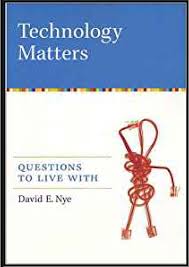Wilde, Oscar. 2011. The Picture of Dorian Gray. Orlando: Seth Watkins.
Review by Michael Beach
This book was originally published in 1891. Oscar Wilde was an Irish author, born in Dublin. Before reading it, I was vaguely familiar with the story, but as expected, there is so much more to it. In the beginning, Dorian Gray is a handsome young man who acts as a model for an artist's portraiture in Victorian London. The artist, Basil Hallward, was so smitten with the painting he decided not to sell it, but eventually gave it to Dorian who displayed it in his home.
At first Dorian Gray is naive, almost innocent. The combination of flattering words from Basil and philosophical enticing of his other friend, Lord Henry, who espoused hedonism, tempts him into an ever growing self-absorbed and malicious lifestyle. As he goes down this track he notices changes to the picture. Every time he does something evil, the image in the picture changes. The painted face absorbs the negative effect of his bad behavior. Over time, those around him age and degenerate, as does the picture image, but the man himself stays exactly as he was at the time the painting was created. The painting becomes the image of the evil man he grows into.
As he notices the changes, he removes the painting to a room where he keeps it locked and covered with a cloth. He begins to fear it and rarely looks at it. He becomes ever more depraved and is nearly found out, yet he continues to avoid detection or any sort of ill-effect. Eventually he commits several murders including the brother of a girl who commits suicide after he despoils and dumps her. He later murders the painter of the portrait when Hallward insists on seeing it again after many years. Finally, Dorian wants to reform. His version of doing a good deed is to tempt a young farm girl, then refrain from going through with debauching her. After explaining to Lord Henry how he is turning a new leaf and becoming good, his friend explains that he is only doing it to appease his own vanity. Dorian becomes enraged, then realizes that Lord Henry is right. He believes he is beyond reform. He decides to destroy the picture and grabs the same knife he used to murder Basil Hallward. He is found dead on the ground of the room where the portrait stands. Gray is on the floor with the knife in his chest with all the disfigurement caused by his deeds, while the portrait has returned to its original youthful version of himself.
Oscar Wilde is playing on the inner conflict we all share of good and evil. In this story, neither good nor evil win so much as evil ultimately loses.










 RSS Feed
RSS Feed